
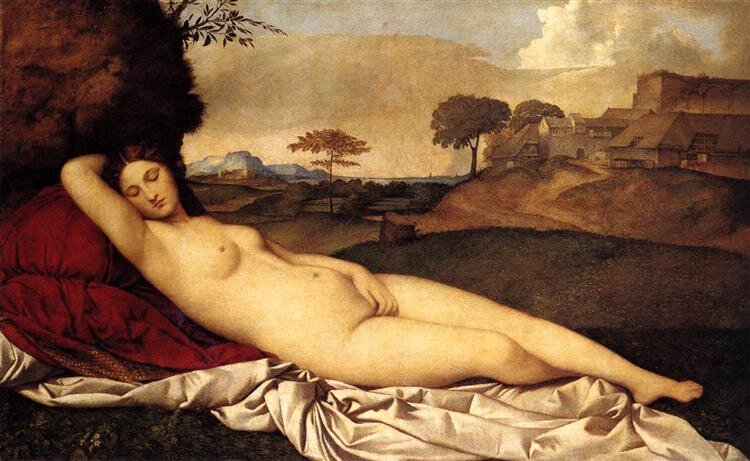
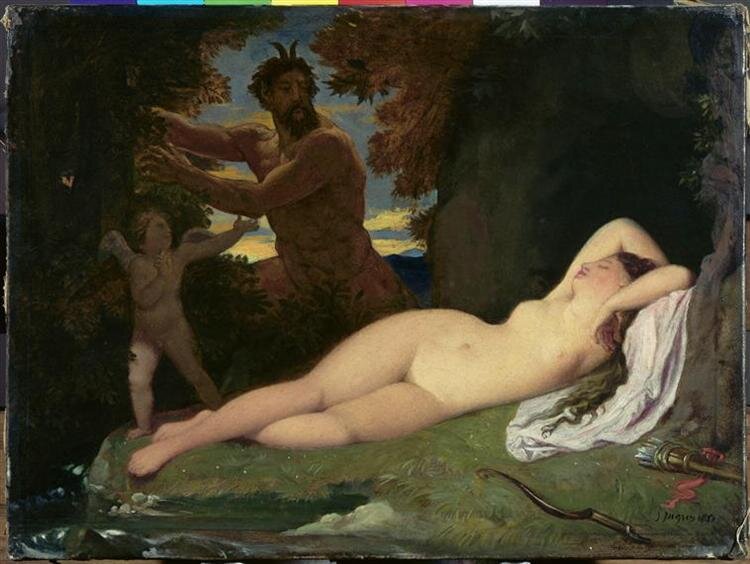
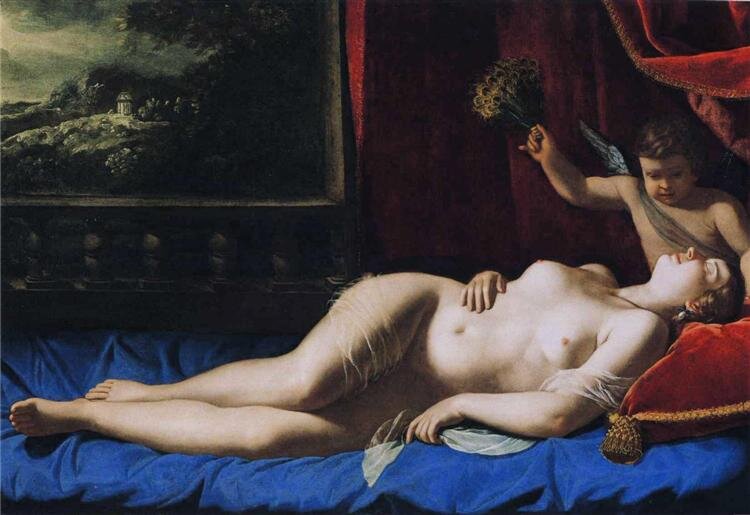

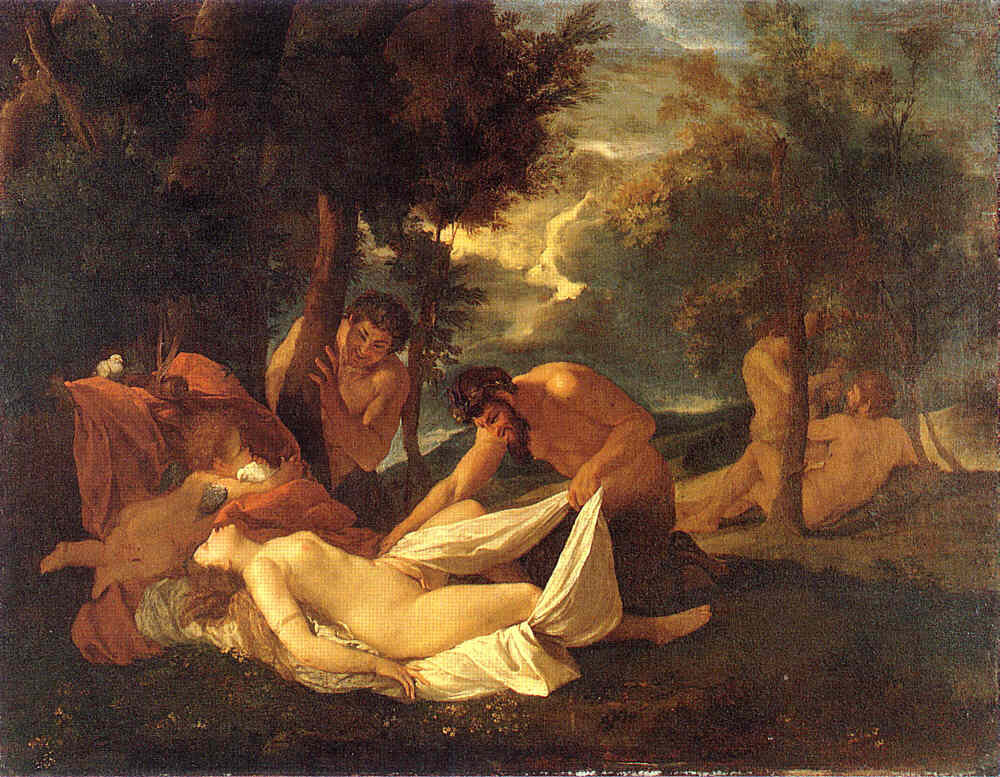
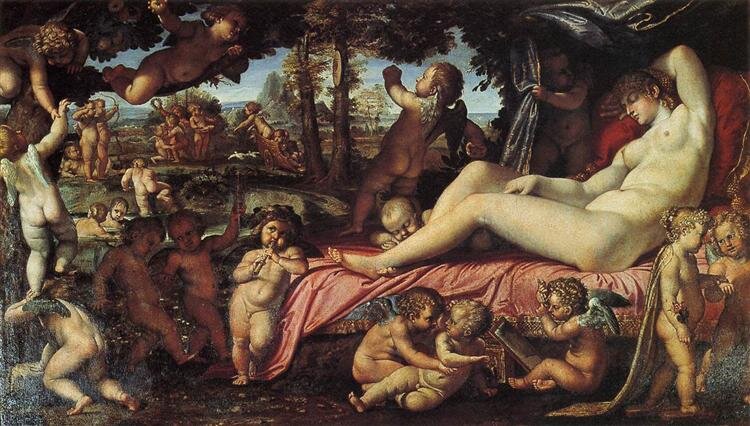
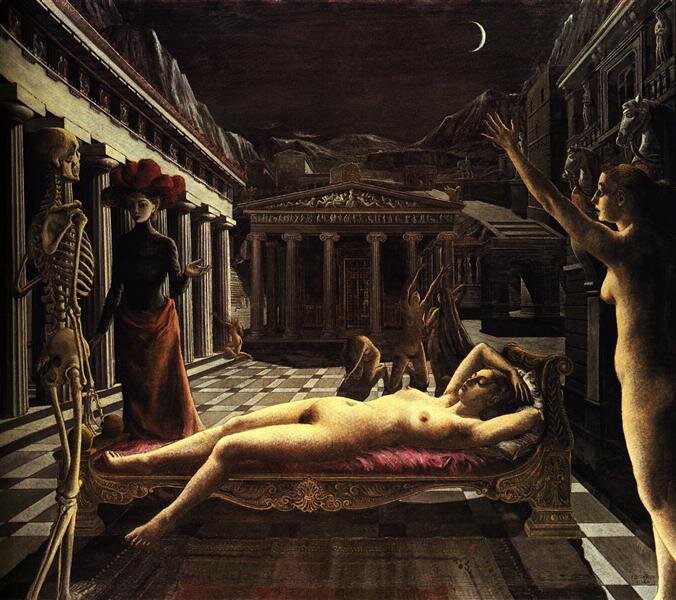
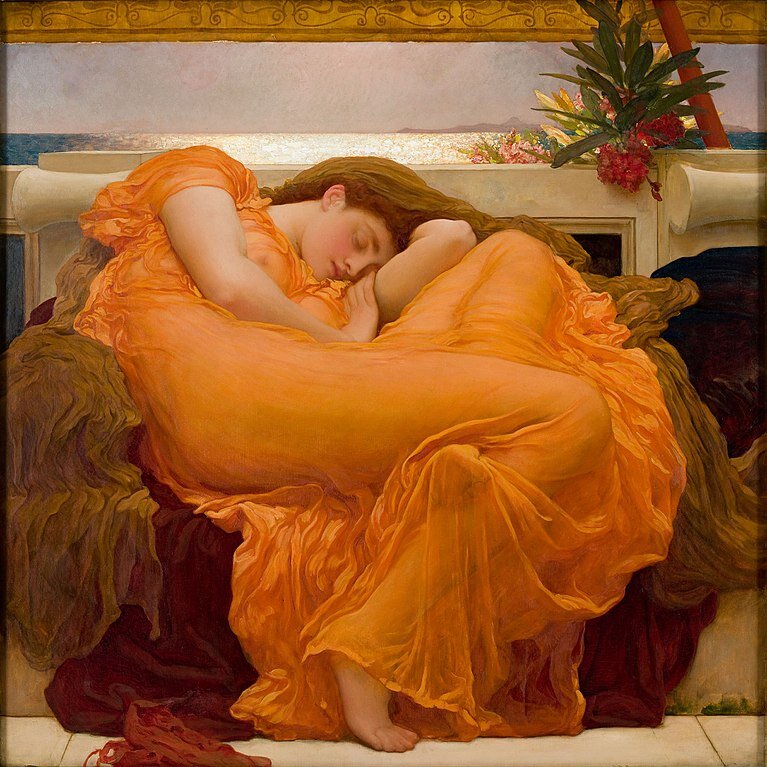
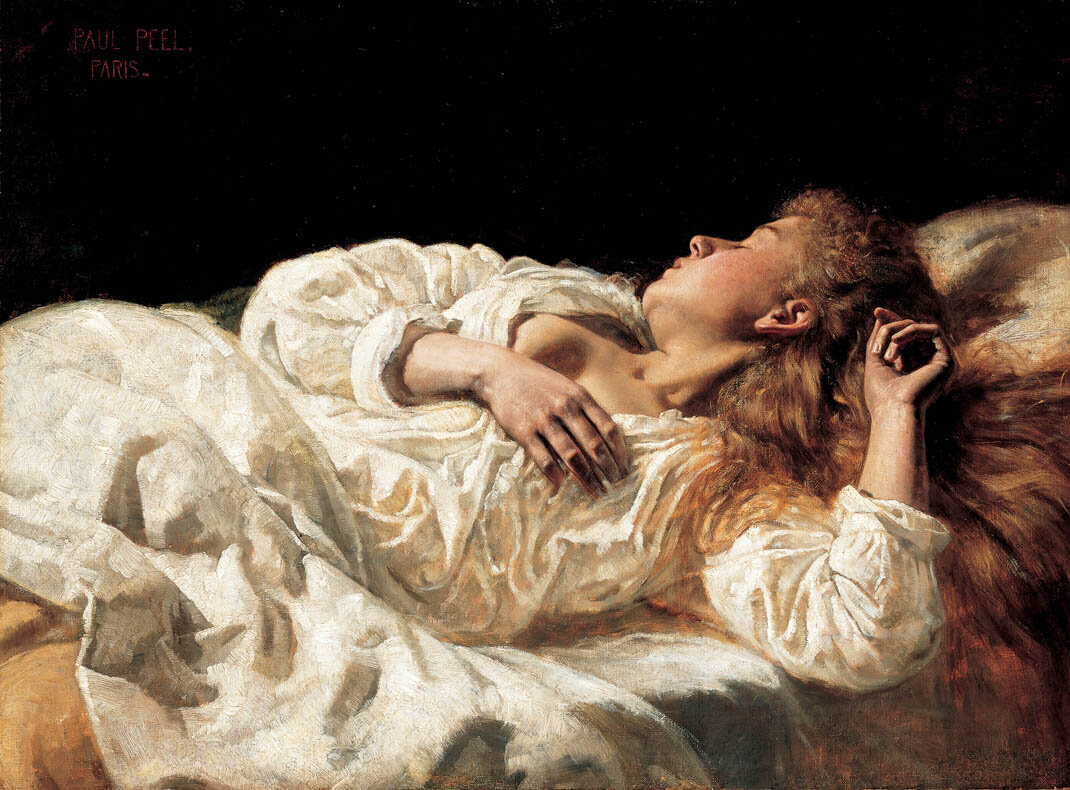
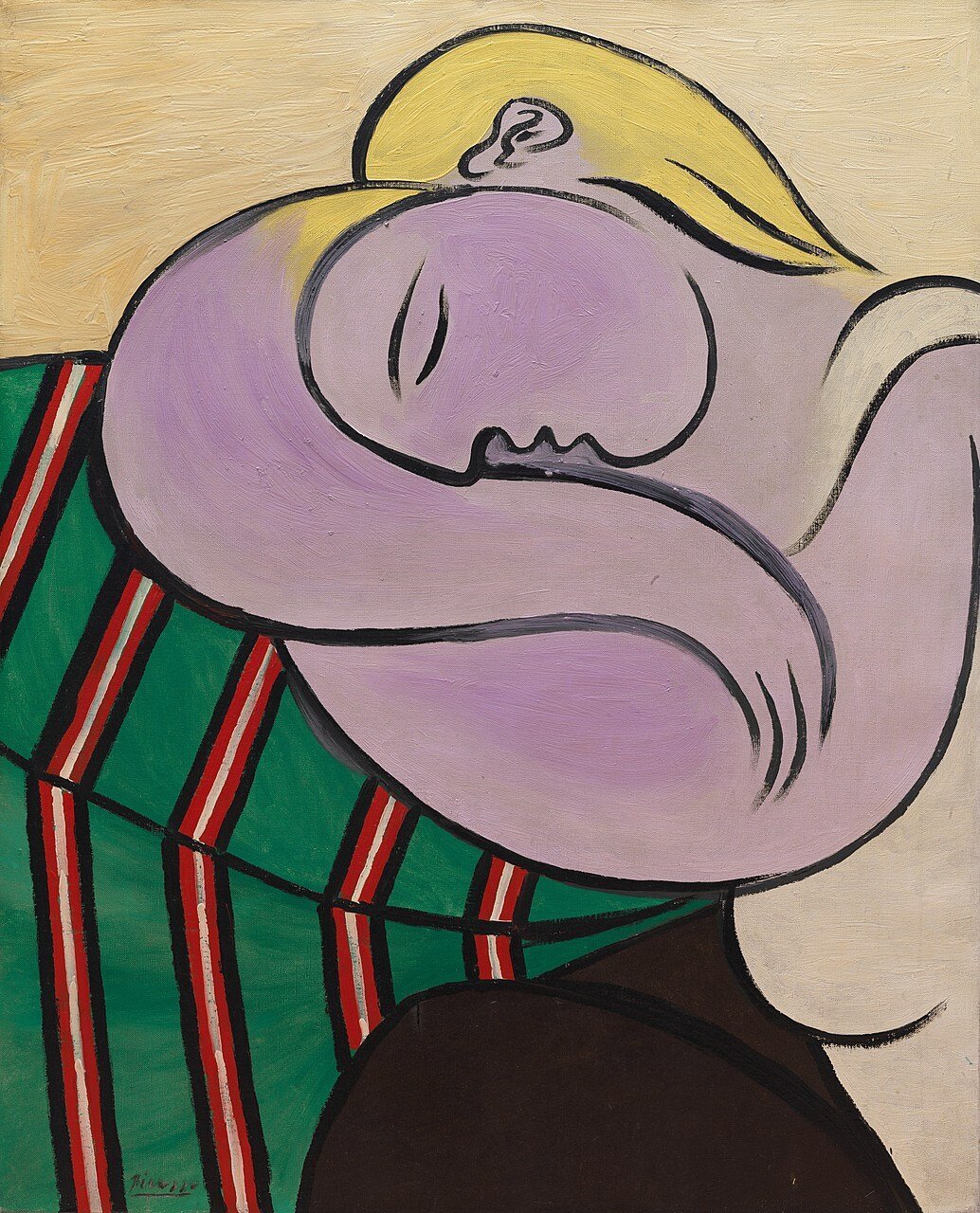
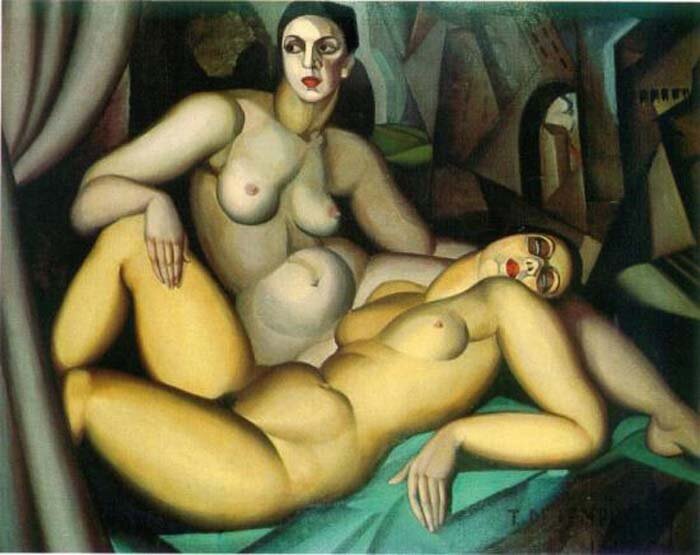
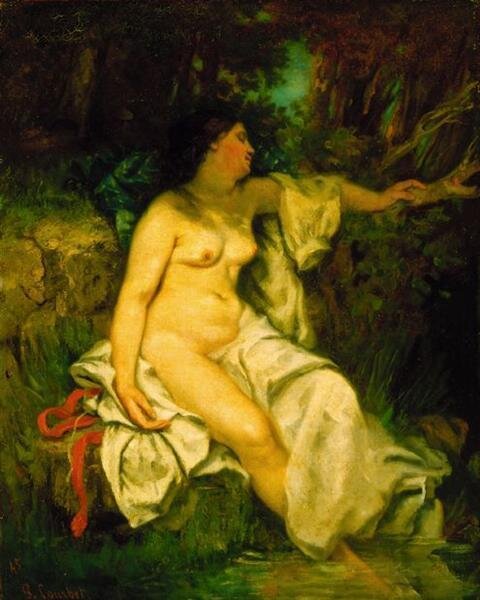
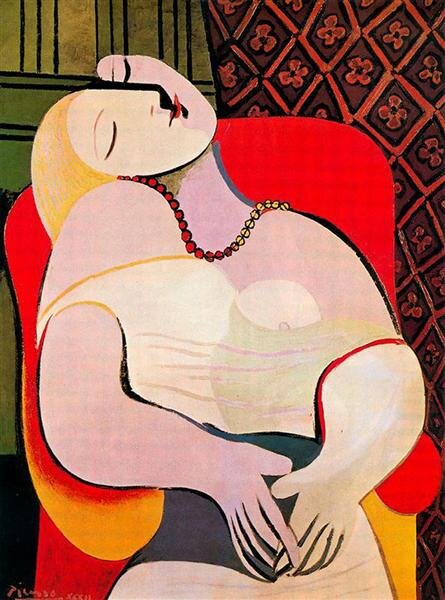
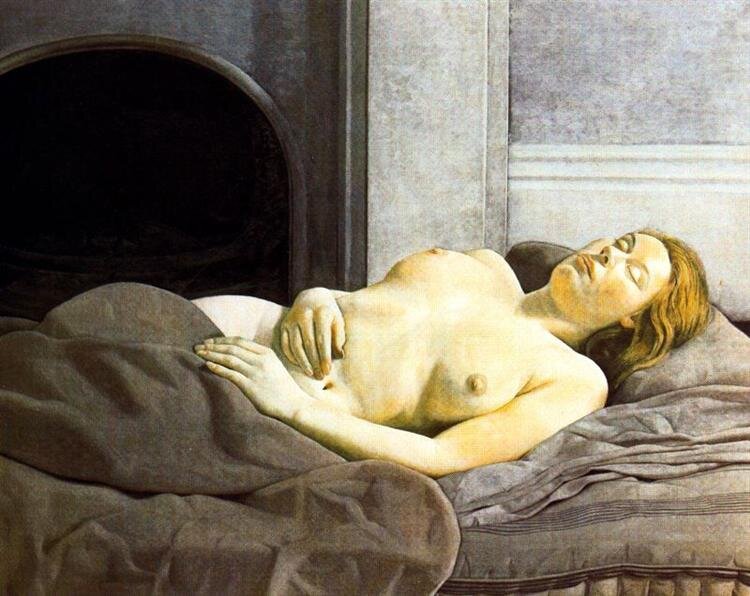
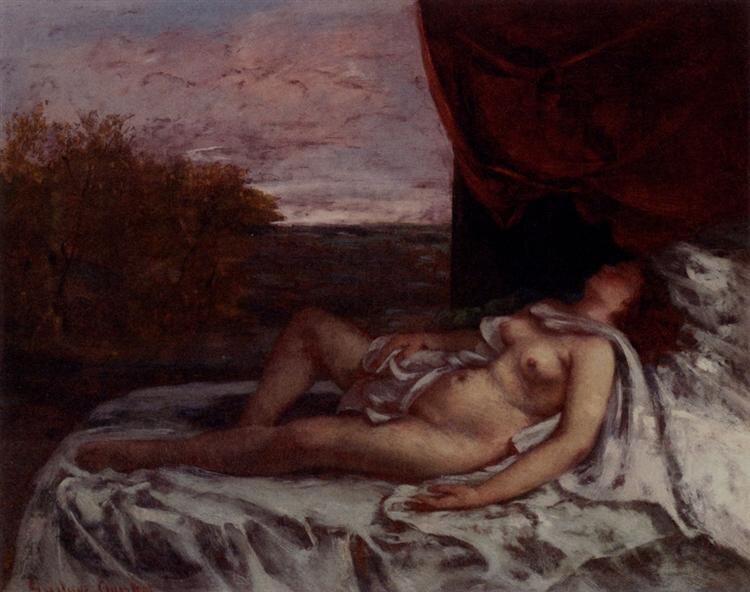
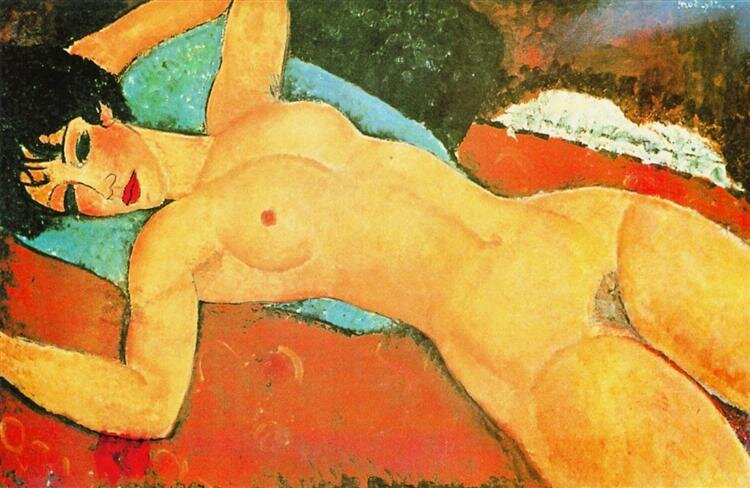
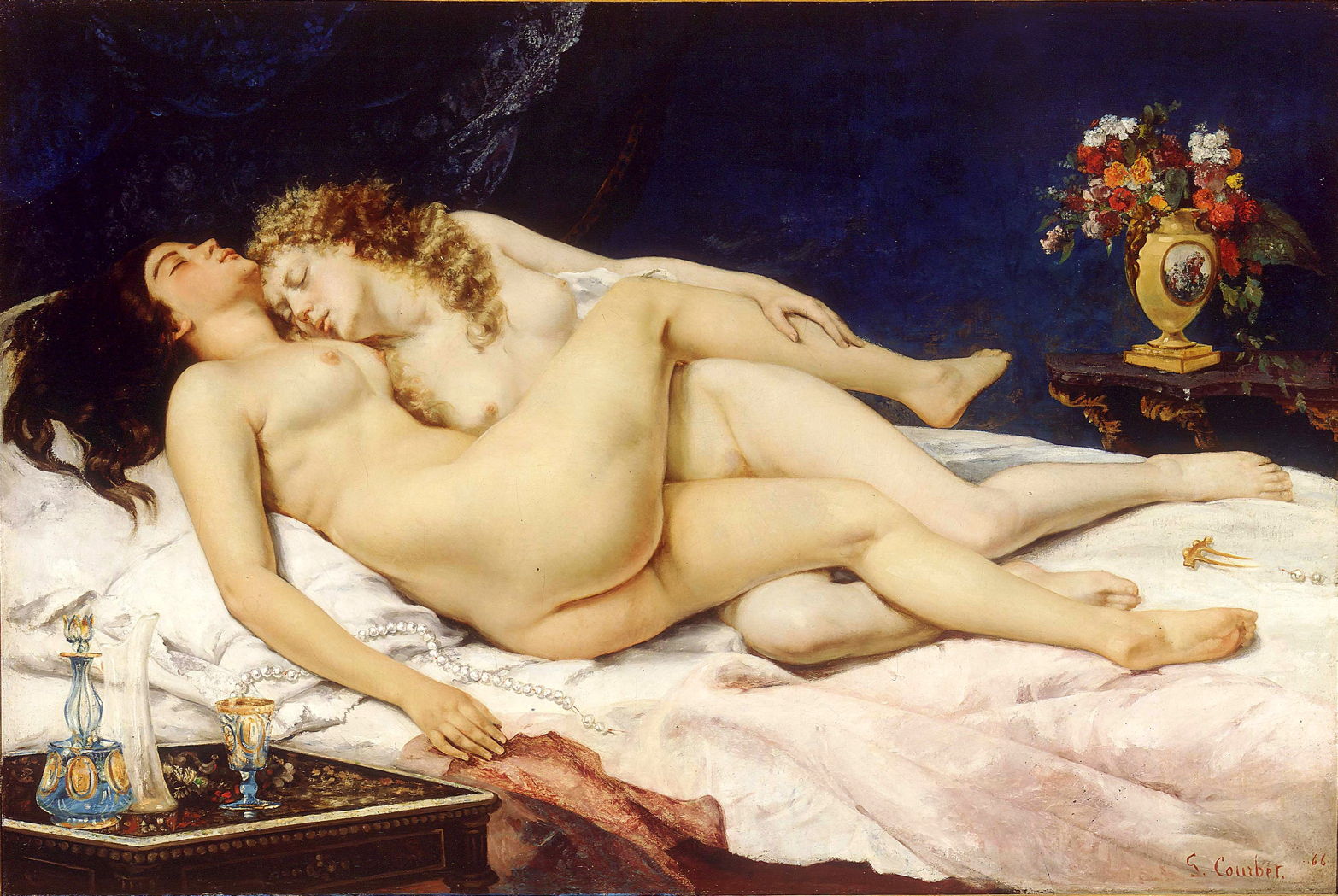
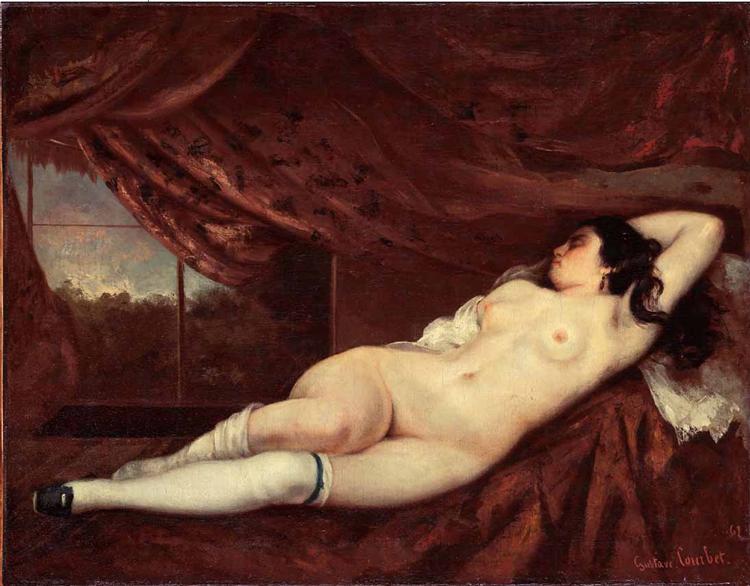
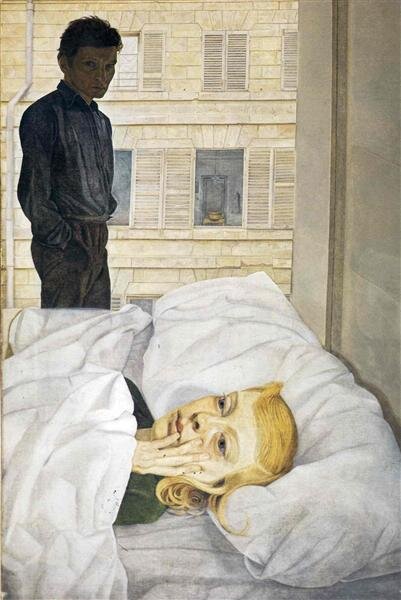
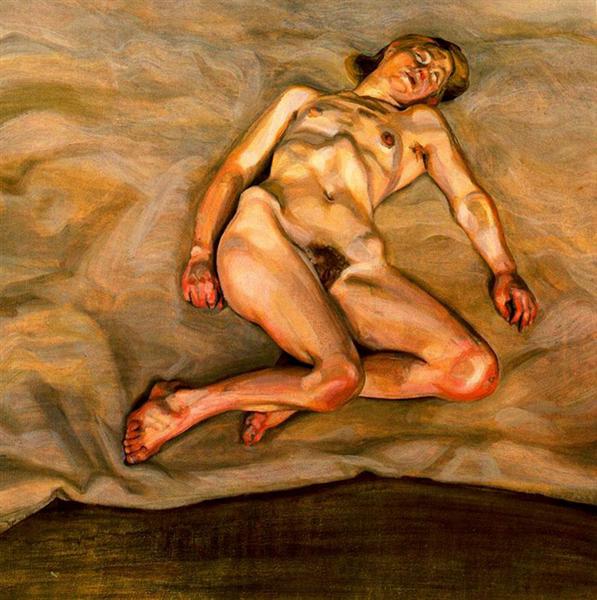
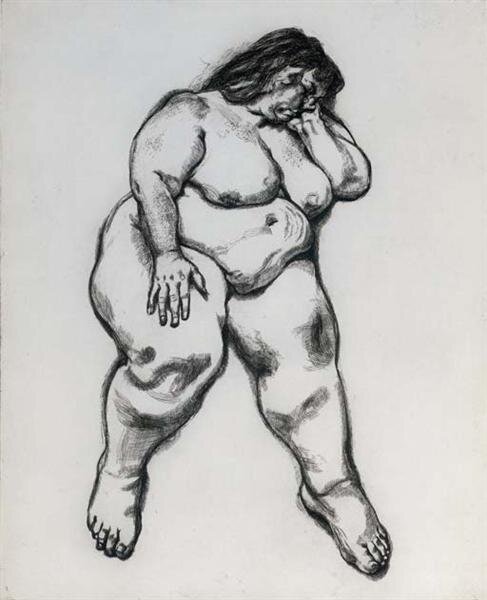
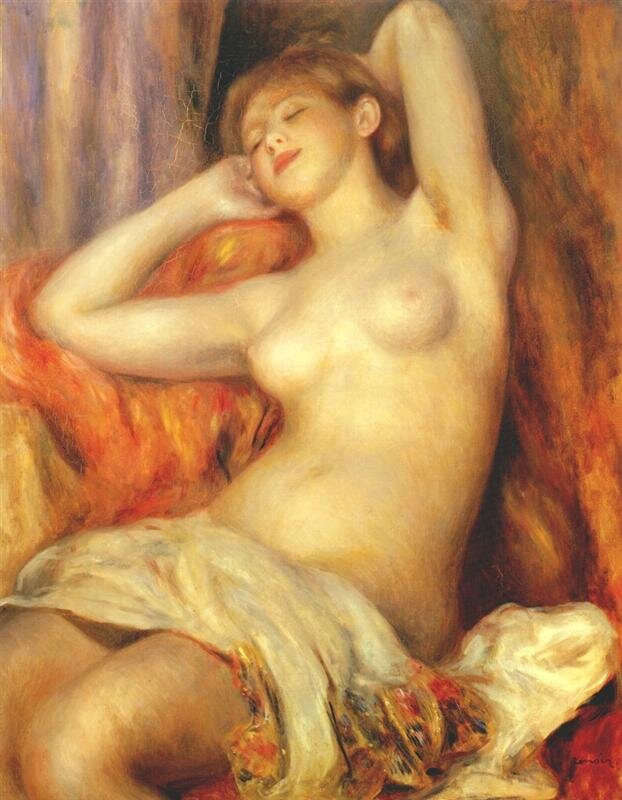
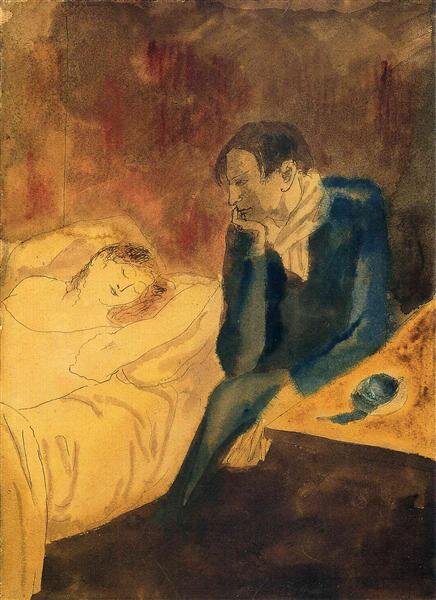

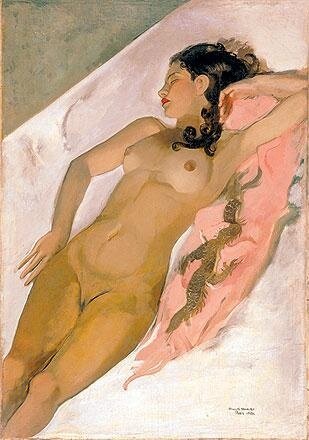
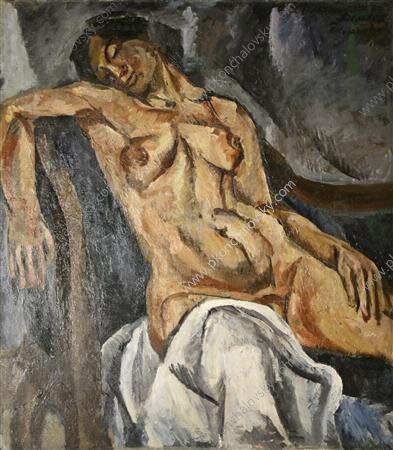
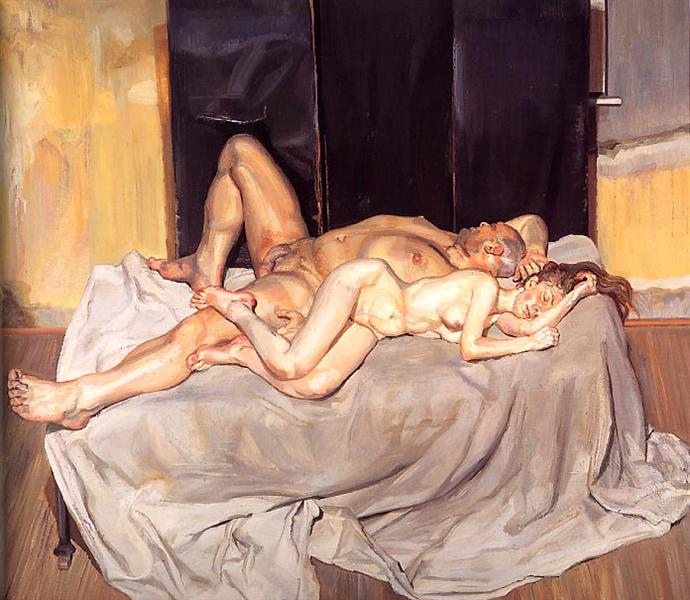
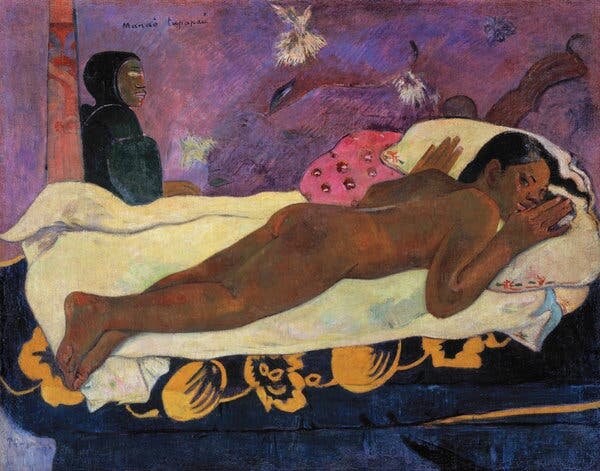
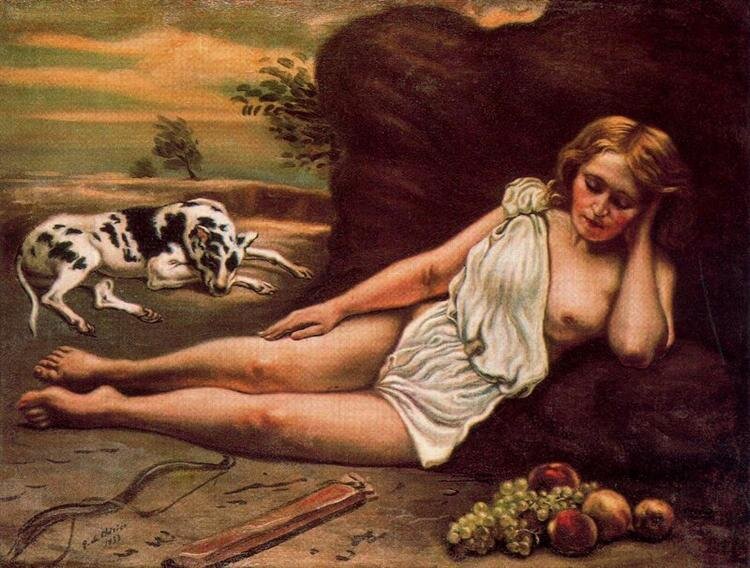
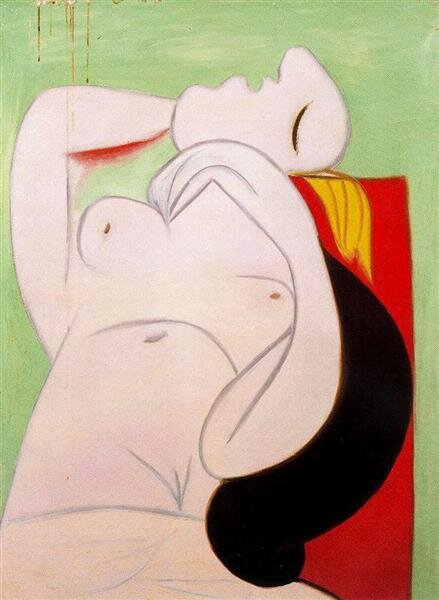
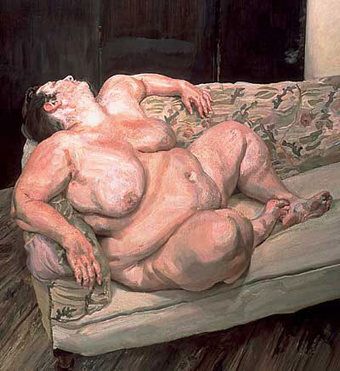

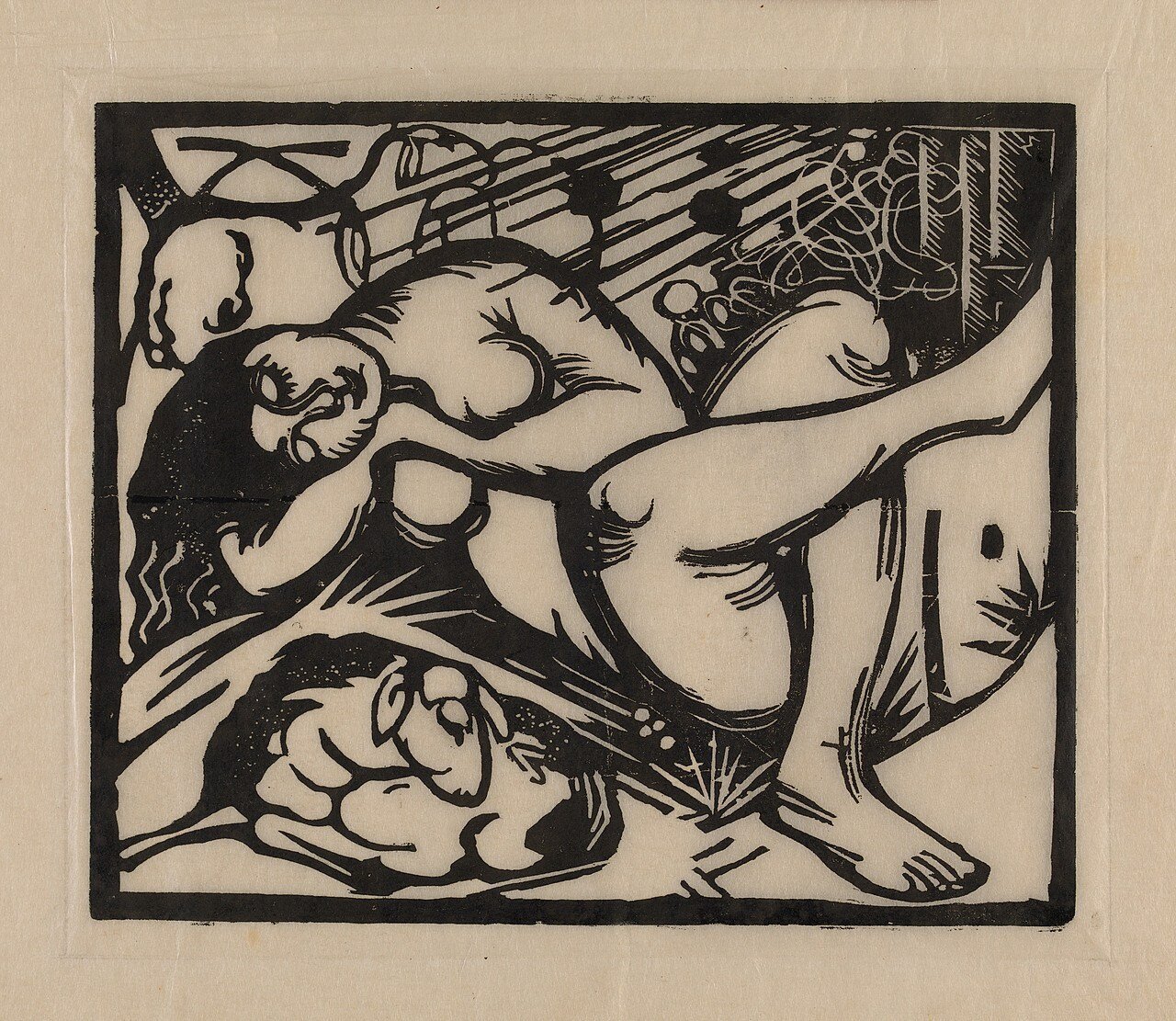
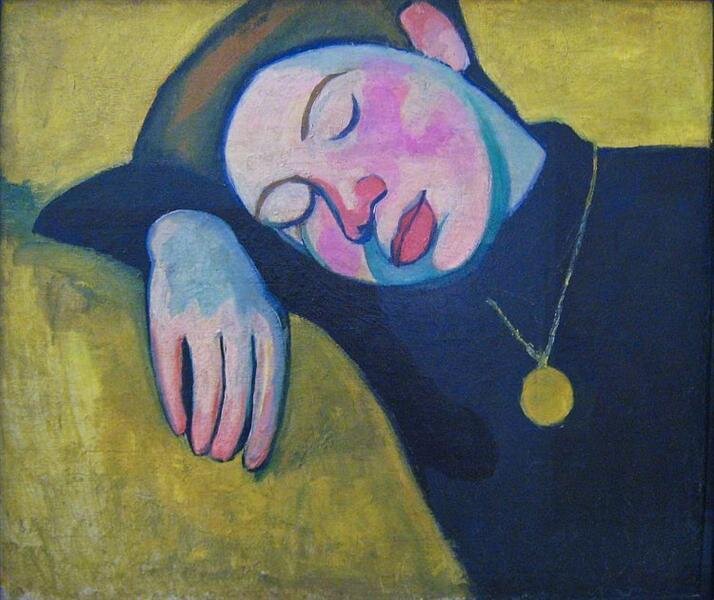
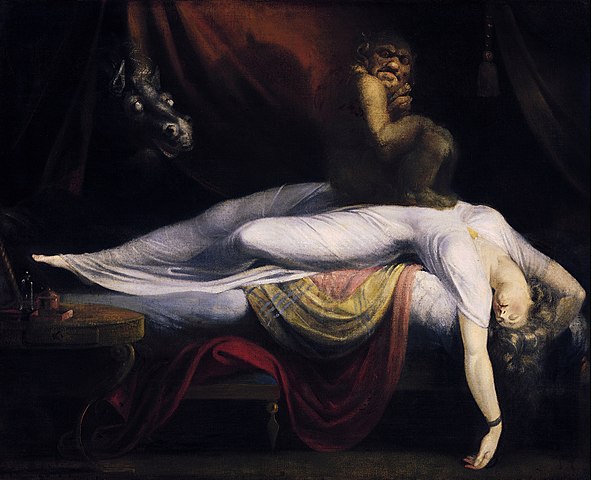
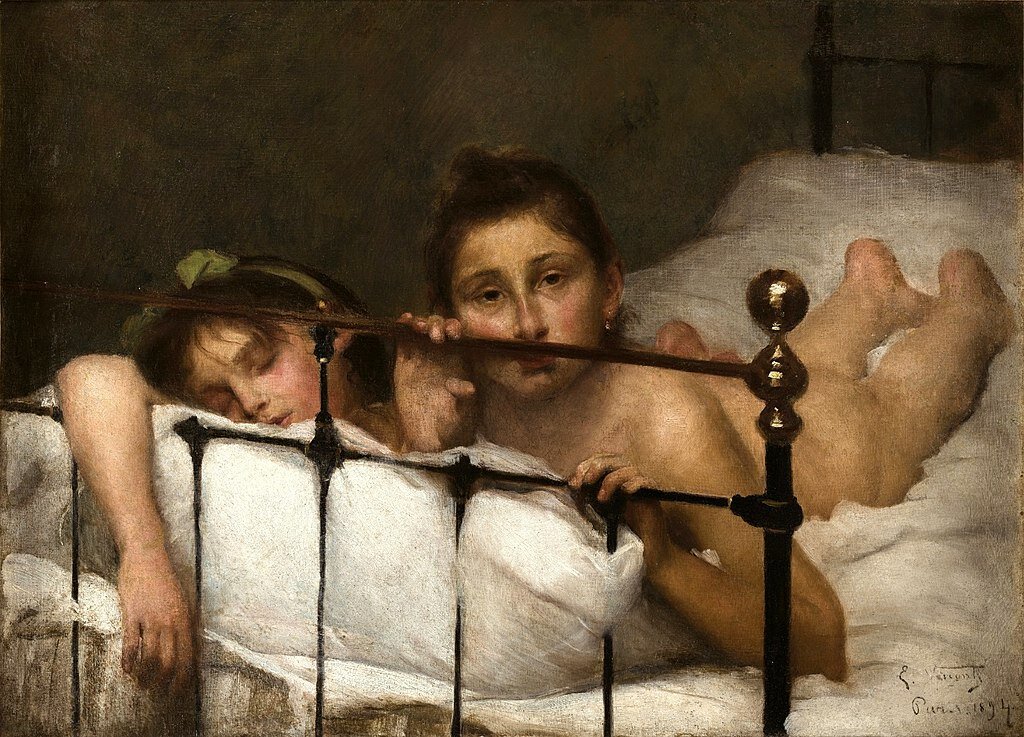
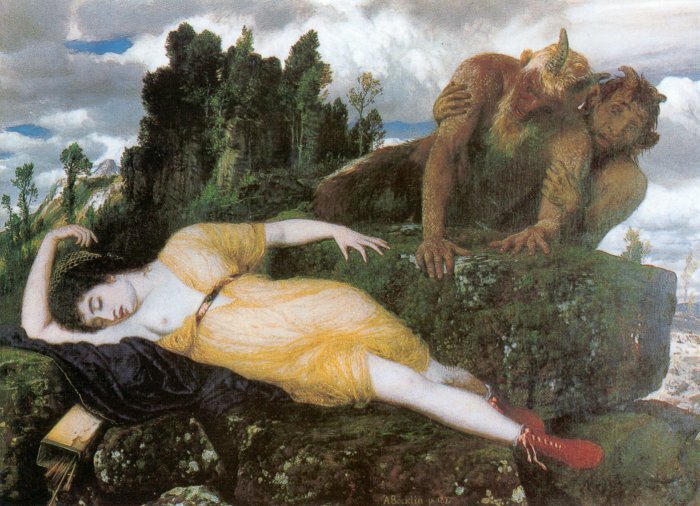

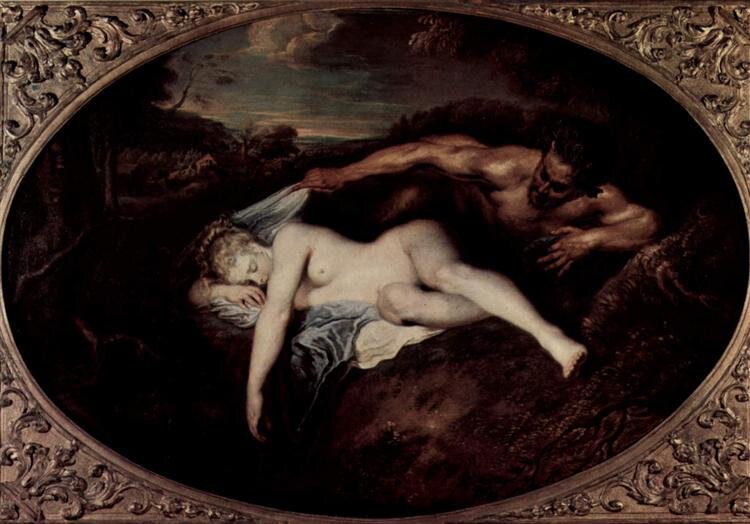
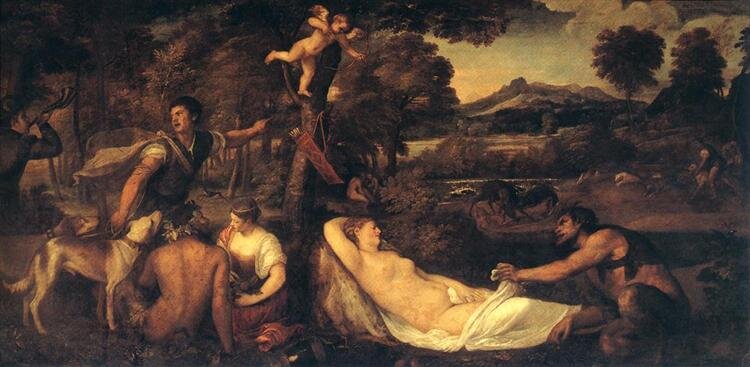
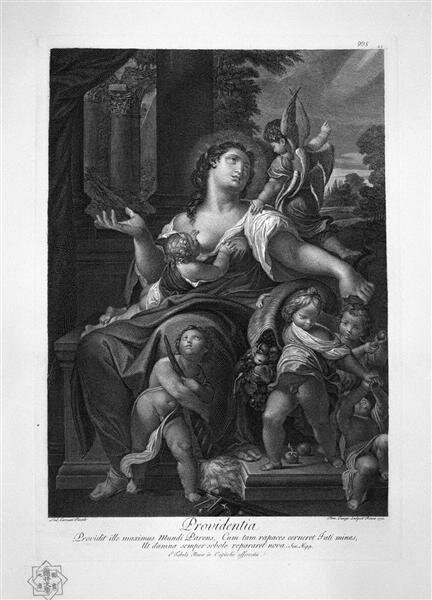
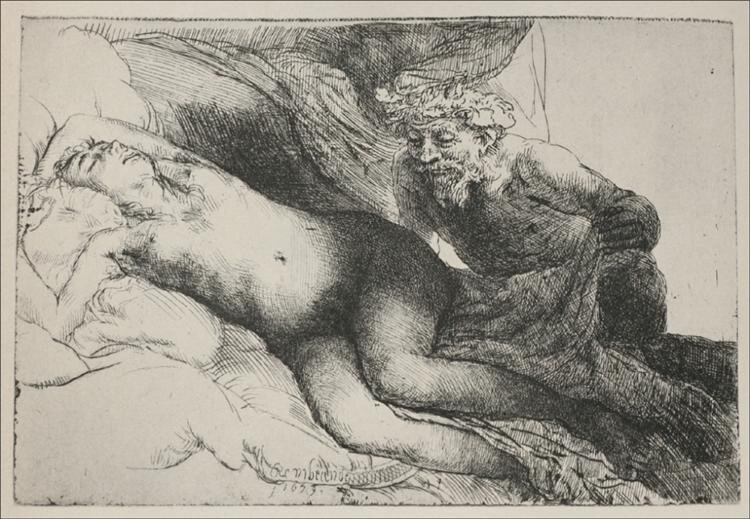
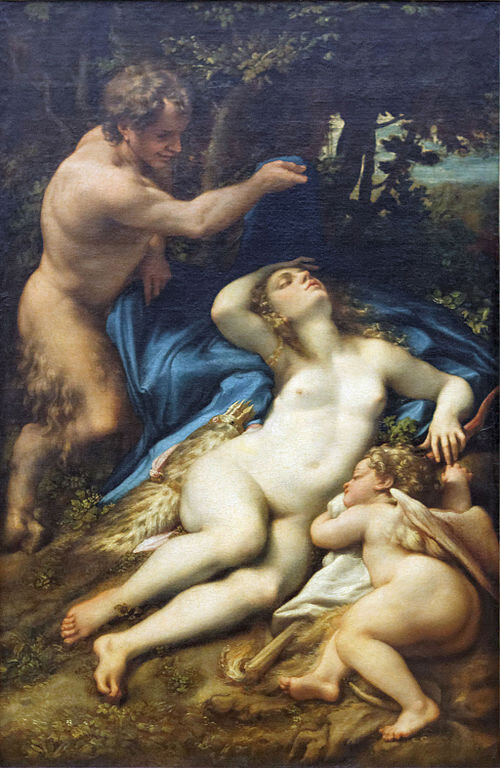

Giorgione (completed by Titian), 1508 - 1510, High Renaissance: Old Masters Picture Gallery, Dresden, Germany

Jean Auguste Dominique Ingres, 1851, Neoclassicism, Musée d'Orsay, Paris, France

Poussin, c.1630, Classicism: Gemäldegalerie Alte Meister, Dresden, Germany

Frederic Leighton, 1st Baron Leighton, 1895: Museo de Arte de Ponce, Puerto Rico
photo credit: Wikipedia

Musee des Beaux Arts de Montreal
Paul Peel
London, Ontario, 1860 – Paris 1892
Repose
About 1890
Oil on canvas
58.1 x 78.1 cm
Purchase, Harold Lawson Bequest, inv. 1979.16

Pablo Picasso, 1931, Solomon R. Guggenheim Museum, New York, Thannhauser Collection, Gift, Justin K. Thannhauser, 1978
“One year before Picasso painted the monumental still life Mandolin and Guitar, Cubism’s demise was announced during a Dada soiree in Paris by an audience member who shouted that “Picasso [was] dead on the field of battle”; the evening ended in a riot, which could be quelled only by the arrival of the police. Picasso’s subsequent series of nine vibrantly colored still lifes (1924–25), executed in a bold Synthetic Cubist style of overlapping and contiguous forms, discredited such a judgment and asserted the enduring value of the technique. But the artist was not simply resuscitating his previous discoveries in creating this new work; the rounded, organic shapes and saturated hues attest to his appreciation of contemporary developments in Surrealist painting, particularly as evinced in the work of André Masson and Joan Miró. The undulating lines, ornamental patterns, and broad chromatic elements of Mandolin and Guitar foretell the emergence of a fully evolved sensual, biomorphic style in Picasso’s art, which would soon celebrate the presence of his new mistress, Marie-Thérèse Walter.
When Picasso met Marie-Thérèse on January 11, 1927 in front of Galeries Lafayette in Paris, she was 17 years old. As he was married at the time and she only a teenager, they were compelled to conceal their intense love affair. While their illicit liaison was hidden from public view, its earliest years are documented, albeit covertly, in Picasso’s work. Five still lifes painted during 1927—incorporating the monograms “MT” and “MTP” as part of their compositions—cryptically announce the entry of Marie-Thérèse into the artist’s life. By 1931 explicit references to her fecund, supple body and blond tresses appear in harmonious, voluptuous images such as Woman with Yellow Hair. Marie-Thérèse became a constant theme; she was portrayed reading, gazing into a mirror, and, most often, sleeping, which for Picasso was the most intimate of depictions.
The abbreviated delineation of her profile—a continuous, arched line from forehead to nose—became Picasso’s emblem for his subject, and appears in numerous sculptures, prints, and paintings of his mistress. Rendered in a sweeping, curvilinear style, this painting of graceful repose is not so much a portrait of Marie-Thérèse the person as it is Picasso’s abstract, poetic homage to his young muse."
Nancy Spector

Pablo Picasso, 1933, Musée Picasso, Paris, France

Henri Rousseau, 1897, Naïve Art (Primitivism): Private Collection, Museum of Modern Art (MoMA), New York City, NY, US

Franz Marc, 1912, Solomon R. Guggenheim Museum, New York Solomon R. Guggenheim Founding Collection

Titian, 1540 - 1542, Mannerism (Late Renaissance), Louvre, Paris, France

Correggio, c.1524-1527, Louvre Museum, Paris